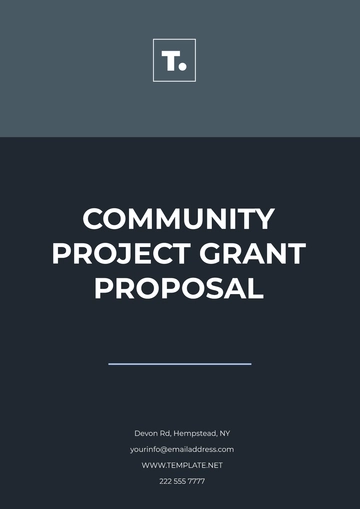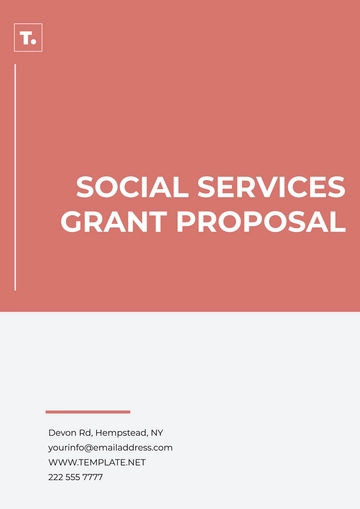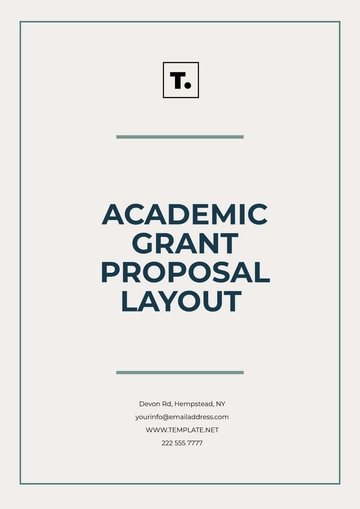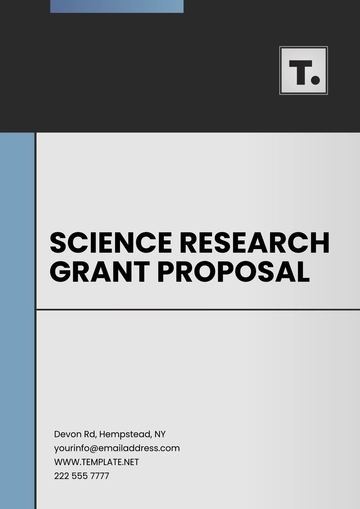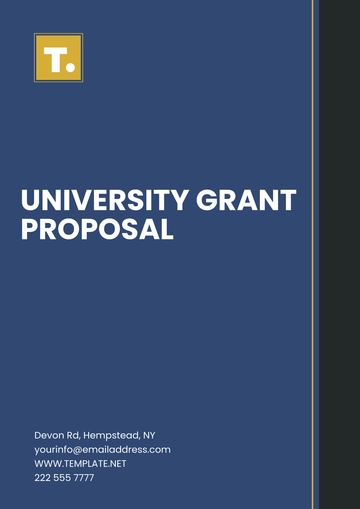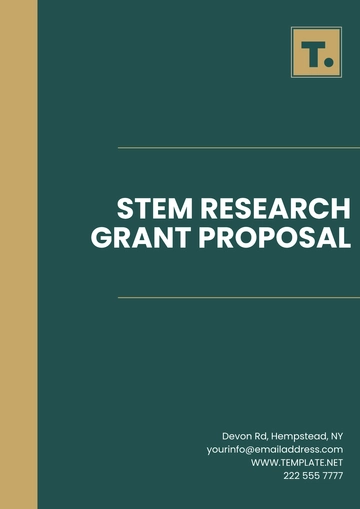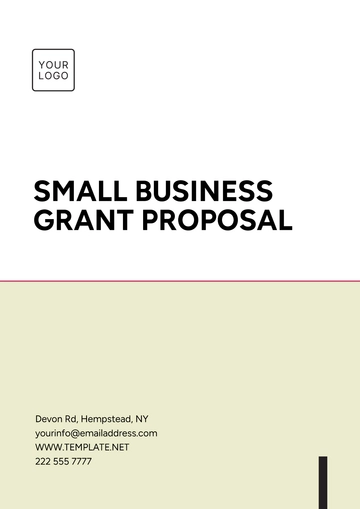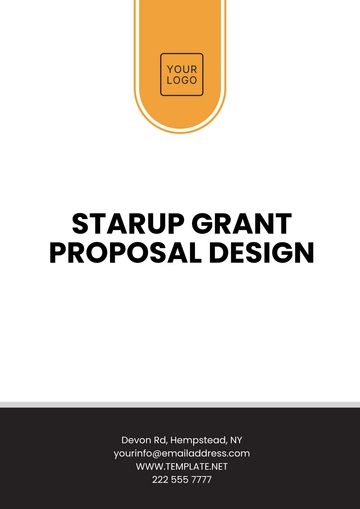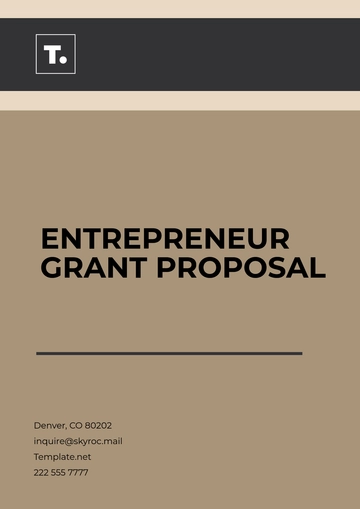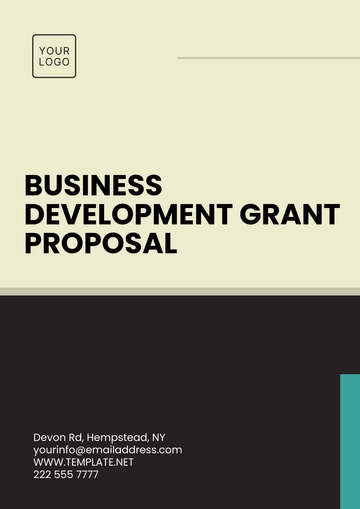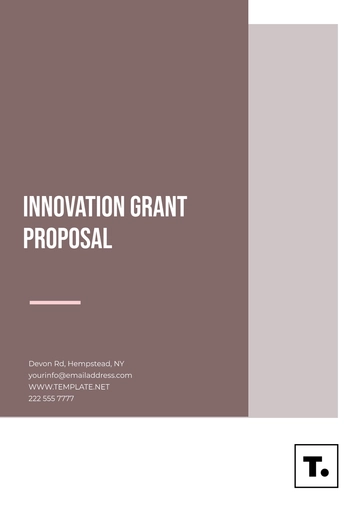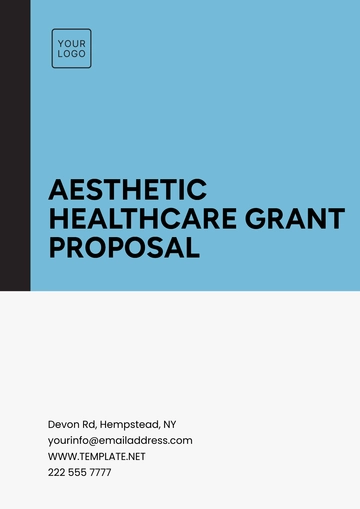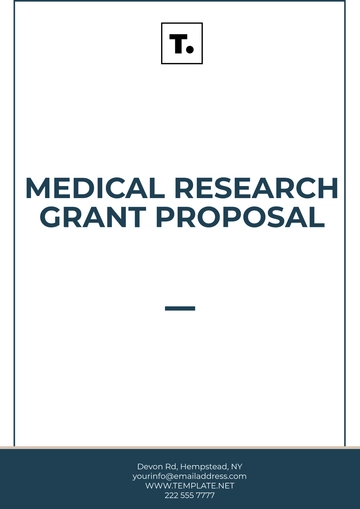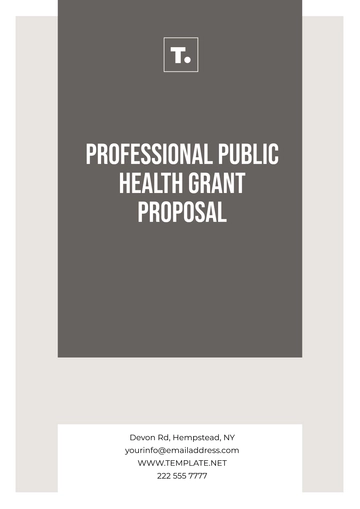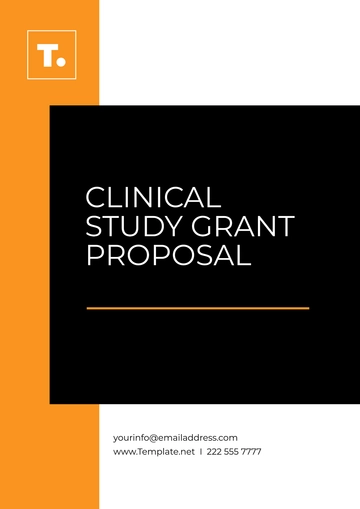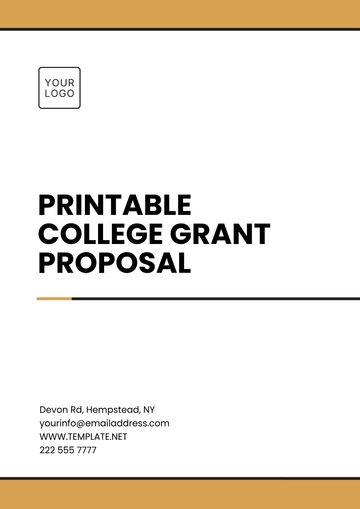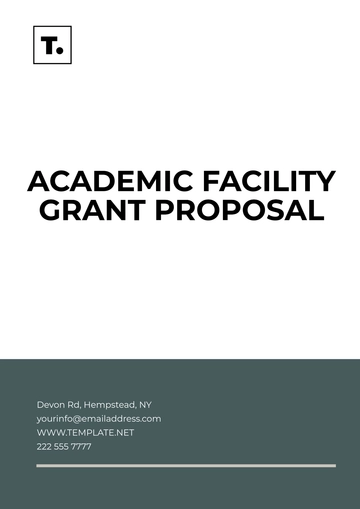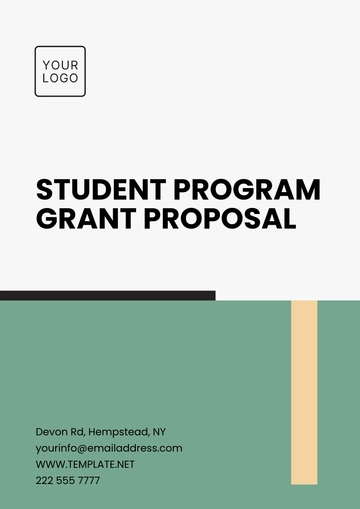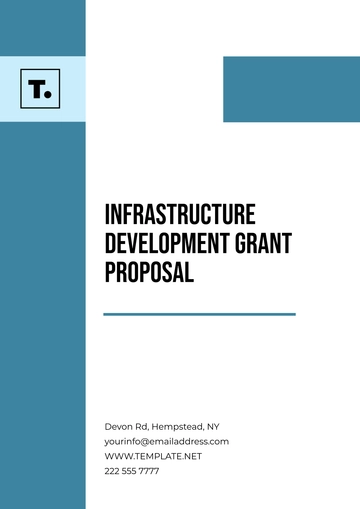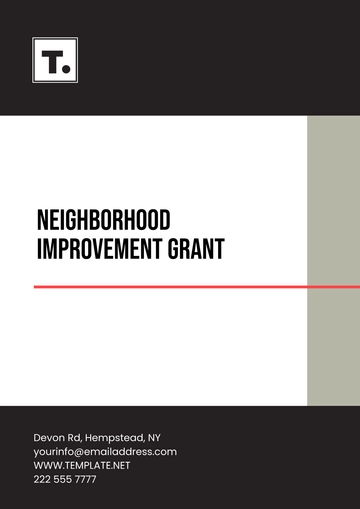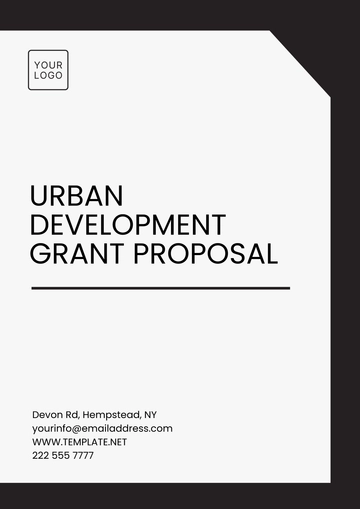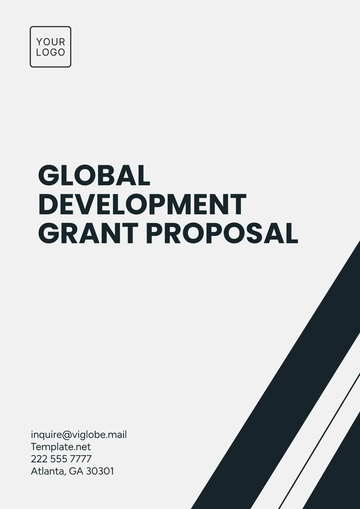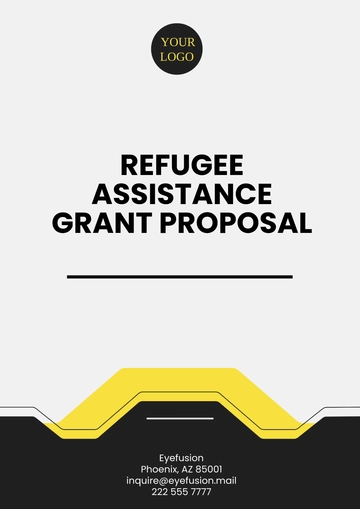Free School Grant Proposal
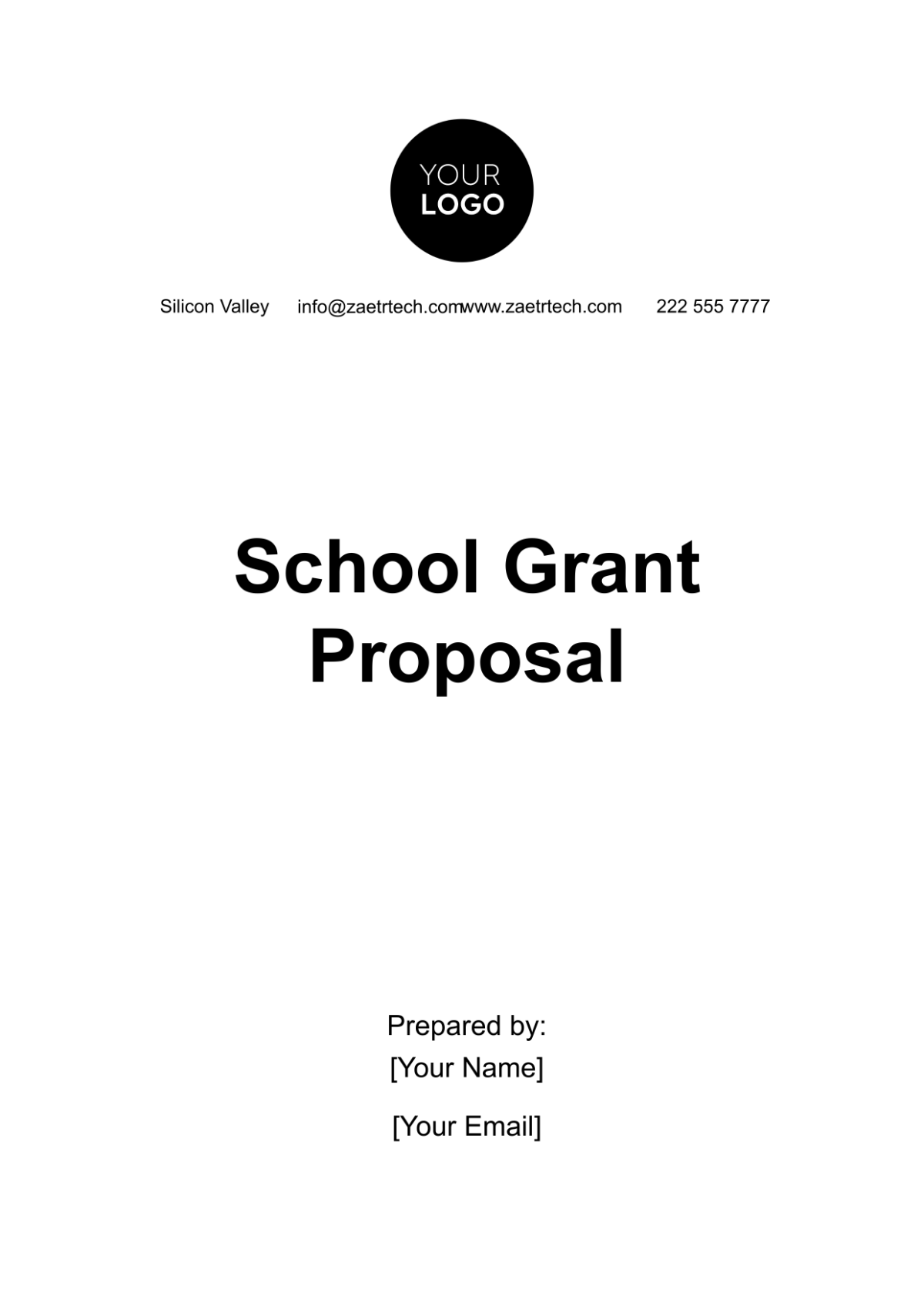
I. Executive Summary
A. Purpose of the Proposal
The primary objective of this proposal is to request funding to support the development and improvement of [Your Company Name]'s educational programs and facilities. With the rapid advancement of technology and the growing demand for skills that align with the needs of the global economy, our school is committed to providing a cutting-edge learning environment that prepares students for the complexities of the 21st century and beyond. The requested grant is essential to upgrade the infrastructure, enhance teacher training, and introduce innovative curriculum models that will ensure students are future-ready.
In the year 2050, education is no longer limited to traditional methods, but rather embraces a more dynamic and interactive approach. The funds we are requesting, amounting to [USD 5,000,000], will be strategically allocated to various key areas of need. This will include the integration of artificial intelligence (AI) and virtual learning platforms, expansion of STEM (Science, Technology, Engineering, and Mathematics) programs, and increased focus on social-emotional learning (SEL) to ensure holistic development of every student.
The overarching goal of this proposal is not just to provide access to modern technology but to create an ecosystem where both teachers and students can thrive in an ever-evolving world. By building on existing resources and implementing new strategies, [Your Company Name] aims to become a model for educational excellence in 2050 and beyond.
B. School's Vision and Mission
As an educational institution dedicated to excellence, [Your Company Name] envisions a future where learning is universally accessible, equitable, and forward-thinking. Our vision goes beyond merely imparting academic knowledge; we aim to shape future leaders, innovators, and problem solvers who are well-equipped to navigate a rapidly changing world.
By 2050, our mission is to position ourselves as a leading institution recognized for our cutting-edge approaches to teaching and learning. We aim to instill critical thinking, creativity, and adaptability in our students. Our programs are designed to nurture not only intellectual growth but also emotional intelligence and ethical responsibility, ensuring that our students are prepared to contribute positively to society.
Mission Statement:
Global Citizenship: We are committed to empowering students to become globally-minded citizens capable of navigating diverse cultural, social, and economic landscapes.
Inclusivity and Equity: We provide an inclusive educational environment that celebrates diversity and fosters equality, ensuring that every student has the opportunity to succeed.
Innovation and Lifelong Learning: We emphasize innovation in education, encouraging students to develop a mindset of lifelong learning that will enable them to continuously grow and adapt to future challenges.
C. Funding Request Overview
This grant proposal seeks a total of [USD 5,000,000] to support our school’s strategic initiatives aimed at fostering technological advancements, curricular innovation, and student development. The requested funds will be used in the following areas:
Technological Upgrades – [USD 2,000,000] will be allocated toward updating our school’s digital infrastructure, including high-speed internet, AI-driven personalized learning platforms, and advanced classroom technologies such as virtual reality (VR) and augmented reality (AR). These tools will enable teachers to offer interactive and immersive learning experiences that cater to diverse student needs.
Curriculum Development – [USD 1,000,000] will fund the development of a new, interdisciplinary curriculum with an emphasis on STEM education. This will involve creating new teaching materials, integrating cross-curricular approaches, and hiring curriculum specialists to develop innovative educational content that includes AI, robotics, and data science.
Teacher Training and Development – [USD 500,000] will be dedicated to professional development programs for teachers, with a particular focus on training them to use emerging technologies and modern pedagogical techniques. This will enable them to deliver more engaging, technology-enhanced lessons, and facilitate student-centered learning.
Community Engagement Initiatives – [USD 500,000] will be allocated to programs aimed at fostering stronger ties with the local community. These initiatives will encourage collaboration between students, parents, educators, and local industry leaders, creating opportunities for mentorship, internships, and community-based learning projects.
Student Support Services – [USD 1,000,000] will be used to enhance mental health services, including the hiring of additional counselors, expanding social-emotional learning (SEL) programs, and providing career counseling services to help students navigate future career paths.
The comprehensive allocation of these funds will enable [Your Company Name] to make substantial strides in meeting the educational challenges of the future while ensuring that no student is left behind.
II. School Profile
A. Overview of [Your Company Name]
Founded in [2050], [Your Company Name] is an educational institution dedicated to preparing students for the dynamic and ever-evolving challenges of the modern world. The school has a reputation for innovation in teaching and learning, particularly in the fields of STEM and technology integration. Over the past [20] years, the school has grown in both size and influence, serving students from diverse backgrounds and consistently striving to stay ahead of educational trends.
Our campus is equipped with state-of-the-art facilities, including dedicated laboratories for robotics, computer programming, and environmental science. In addition to traditional classrooms, we offer flexible learning spaces designed for collaborative projects, maker labs, and hands-on exploration. By fostering an environment where curiosity and creativity thrive, we have established ourselves as a leader in education for the 21st century.
B. Demographics
Our school is home to a diverse student body that reflects the globalized world we live in. Diversity and inclusion are at the heart of our educational philosophy, and we are proud to serve students from various socioeconomic, cultural, and ethnic backgrounds.
Ethnic Diversity: Approximately [40%] of our students come from ethnic minority backgrounds, contributing to a rich cultural tapestry that enhances the learning experience for everyone.
Economic Diversity: [55%] of our student population comes from low-income families, and we are committed to ensuring that financial barriers do not impede access to quality education.
Gender Representation: [50%] of our student body consists of female students, and we are particularly proud of our efforts to encourage female participation in traditionally male-dominated fields such as STEM.
Neurodiversity: A growing number of our students are neurodivergent, and we have implemented specialized programs that provide them with the support they need to succeed academically and socially.
C. Existing Programs
[Your Company Name] offers a wide range of programs designed to provide students with both academic and personal growth opportunities. Our curriculum is centered around innovation, creativity, and critical thinking, preparing students for the workforce of the future.
STEM Innovation Labs: Our dedicated STEM labs offer students the chance to engage in hands-on learning experiences in fields such as robotics, artificial intelligence, and computer programming. These labs foster a culture of experimentation and discovery, encouraging students to push the boundaries of what is possible.
Social-Emotional Learning (SEL) Initiatives: In recognition of the importance of emotional intelligence in the 21st century, we have developed robust SEL programs that focus on empathy, collaboration, and mental well-being. These initiatives help students develop strong interpersonal skills, emotional resilience, and the ability to work effectively in diverse teams.
Arts Integration: We believe that creativity is a crucial complement to scientific and technological skills, which is why our curriculum integrates the arts with STEM subjects. Our students have access to a wide range of creative disciplines, from visual arts to music, drama, and creative writing, all of which enhance their problem-solving abilities and foster out-of-the-box thinking.
III. Proposal Justification
A. Identification of Needs
1. Technological Shortfalls
Although [Your Company Name] has consistently invested in technology over the years, our current digital infrastructure is struggling to keep pace with the technological demands of modern education. The integration of artificial intelligence (AI) and machine learning has revolutionized the way students learn, enabling personalized, data-driven instruction that adapts to individual needs. However, our existing hardware and network infrastructure are outdated and lack the capacity to fully support these advanced systems.
Many of our computers, tablets, and smartboards are nearing the end of their operational life, and classrooms are not equipped to handle the bandwidth required for seamless virtual reality (VR) and augmented reality (AR) applications. This limits our ability to provide students with immersive, interactive learning experiences that are essential for 21st-century education. Additionally, many of our students do not have access to high-speed internet or modern devices at home, further widening the digital divide.
2. Outdated Curriculum
The world is changing at an unprecedented pace, and our curriculum needs to evolve to reflect this reality. Our current curriculum, which was last updated in [2040], does not adequately address the interdisciplinary nature of modern work environments. The rapid advancement of automation, AI, and machine learning has transformed industries, and students must be equipped with a broader set of skills that integrate STEM education with critical thinking, creativity, and emotional intelligence.
We need to revise our curriculum to include more project-based learning, interdisciplinary projects, and real-world applications of STEM. Students should have the opportunity to work on problems that reflect the challenges they will face in the workforce, such as designing sustainable technologies, creating AI-driven solutions, and understanding the ethical implications of new technologies.
3. Teacher Professional Development
While our teaching staff is highly skilled and dedicated, many lack the specialized training necessary to effectively integrate emerging technologies into their classrooms. The rapid pace of technological change has left many educators struggling to stay current with best practices in AI, data analytics, and personalized learning systems. This not only affects the quality of instruction but also limits our ability to fully leverage the potential of these tools to enhance student learning.
To address this issue, we propose a comprehensive professional development program that will equip teachers with the skills and knowledge needed to use AI and other advanced technologies to create personalized, student-centered learning environments. By investing in our teachers, we are investing in the long-term success of our students.
4. Mental Health and Social-Emotional Learning
The mental health and well-being of students have become increasingly important in an era marked by digital transformation and global competition. With the pressures of academic achievement, technological overload, and social media, students face unprecedented levels of stress and anxiety. Studies have shown that social-emotional learning (SEL) can significantly improve students' mental health, academic performance, and overall well-being. However, our current mental health services and SEL programs are underfunded and understaffed.
Expanding these services is essential to helping students cope with the challenges of modern life. By providing additional counselors and enhancing our SEL programs, we can create a supportive environment where students feel safe, understood, and empowered to succeed.
B. Supporting Data
1. Student Performance Statistics
Data from recent assessments indicates that many students are struggling to meet the demands of STEM-related subjects, which are becoming increasingly important in the global economy. Specifically, only [60%] of students in grades [9-12] are currently proficient in STEM areas, reflecting a significant gap between the skills students possess and the skills they need to thrive in the future workforce.
Additionally, [75%] of students have reported experiencing significant stress due to academic pressures, particularly in relation to digital learning environments. These statistics highlight the urgent need for improved support systems and a more modernized, engaging curriculum that resonates with today’s learners.
2. Community Feedback
In a recent survey, [90%] of parents expressed concerns about their children's lack of access to the technology and resources needed to succeed in a highly competitive academic environment. Moreover, parents and students alike have called for more experiential, hands-on learning opportunities, particularly in fields such as robotics, AI, and environmental science.
Feedback from teachers further emphasizes the need for comprehensive professional development programs that focus on integrating technology and innovation into the classroom. Teachers have indicated that while they are excited about new technologies, they feel ill-equipped to fully utilize them in a way that enhances student learning.
IV. Project Plan and Implementation
A. Goals and Objectives
Goal 1: Enhance Digital Infrastructure
In the first phase of the project, we will focus on upgrading our school’s technological infrastructure to ensure that every classroom is equipped with the tools necessary for 21st-century learning. Our objective is to provide every student and teacher with access to the latest educational technology by the end of [2051].
Objective 1.1: Upgrade all classroom technology, including AI-powered learning platforms, by [2051]. This will involve replacing outdated computers, installing high-speed internet, and implementing VR/AR technologies in every classroom.
Objective 1.2: Ensure that [100%] of students have access to personal learning devices, such as tablets or laptops, by providing subsidies or lending programs for students from low-income families.
Goal 2: Develop a Future-Focused Curriculum
To better align with the needs of the 2050 global economy, we will overhaul our existing curriculum to include more interdisciplinary learning, project-based education, and integration of AI and machine learning. This curriculum will provide students with the critical thinking and problem-solving skills they need to navigate the challenges of the future.
Objective 2.1: By [2052], implement a new curriculum that integrates AI, machine learning, and interdisciplinary subjects such as environmental science, ethics, and the humanities.
Objective 2.2: Increase student proficiency in STEM subjects to at least [85%] by [2055] through targeted interventions and curriculum enhancements.
Goal 3: Teacher Training and Development
Empowering our teachers is essential to the success of any educational program. Therefore, we will invest in comprehensive professional development programs to ensure that every teacher is equipped with the tools and knowledge to effectively use AI and emerging technologies in their classrooms.
Objective 3.1: Train [100%] of teachers in the use of AI, data analytics, and personalized learning platforms by [2053]. This will include workshops, online courses, and one-on-one coaching sessions.
Objective 3.2: Improve teacher retention and satisfaction rates by [15%] over the next five years, ensuring that our faculty feels supported and empowered to innovate in the classroom.
Goal 4: Expand Student Support Services
Recognizing the critical importance of student well-being, we aim to significantly expand our mental health and SEL programs to ensure that all students receive the emotional and psychological support they need to succeed both academically and personally.
Objective 4.1: Hire an additional [10] counselors by [2051] to provide mental health support and career counseling services for students.
Objective 4.2: Introduce new SEL programs that focus on emotional regulation, empathy, collaboration, and resilience, ensuring that every student has access to the tools they need to thrive in a complex and challenging world.
B. Timeline for Implementation
Year | Project Milestone |
|---|---|
[2051] | Upgrade [50%] of classroom technology, hire additional counselors, launch teacher training programs |
[2052] | Complete curriculum development and begin phased implementation of new interdisciplinary and AI-integrated subjects |
[2053] | Complete teacher training for all staff in AI and personalized learning platforms, begin monitoring classroom effectiveness |
[2054] | Assess curriculum performance and adjust as needed based on student outcomes and teacher feedback |
[2055] | Achieve STEM proficiency target of [85%] and report on overall project impact |
C. Evaluation and Monitoring
To ensure the success of this project, we will implement a robust evaluation and monitoring system that tracks both qualitative and quantitative outcomes. The evaluation process will be ongoing and will involve the collection of data on student performance, teacher feedback, and overall project impact.
Key performance indicators (KPIs) will include:
Student Achievement Data: We will measure improvements in student proficiency in STEM and other key subject areas, with an annual review of test scores, project-based assessments, and overall academic performance.
Teacher Feedback: Regular surveys and focus groups will be conducted to assess teacher satisfaction with the professional development programs and the integration of technology in the classroom.
Mental Health Metrics: We will track the utilization rates of counseling services and SEL programs, as well as improvements in students' mental health and emotional well-being through both quantitative data (such as attendance and engagement rates) and qualitative assessments (student self-reports and counselor feedback).
Additionally, quarterly progress reports will be prepared and submitted to the grant provider. These reports will highlight major accomplishments, challenges, and any necessary adjustments to the project plan. The feedback loop created by this ongoing evaluation process will allow us to make real-time improvements to ensure the project's long-term success.
V. Budget
A. Detailed Budget Breakdown
Category | Requested Funds (USD) |
|---|---|
Technological Upgrades | [2,000,000] |
Curriculum Development | [1,000,000] |
Teacher Training and Development | [500,000] |
Community Engagement Initiatives | [500,000] |
Student Support Services | [1,000,000] |
Total | [5,000,000] |
B. Justification of Costs
Technological Upgrades: In today’s highly digital learning environment, access to modern technology is non-negotiable. The [USD 2,000,000] will be used to purchase AI-powered learning platforms, state-of-the-art hardware such as VR/AR devices, and upgrade classroom networks to handle increased digital demands. These upgrades will significantly enhance student engagement, learning outcomes, and overall classroom experience.
Curriculum Development: Creating an interdisciplinary, future-focused curriculum requires investment in new educational content, resources, and specialists. The [USD 1,000,000] will be directed toward hiring curriculum experts, purchasing AI and robotics kits, and developing project-based learning materials that align with real-world applications.
Teacher Training: The [USD 500,000] dedicated to professional development will cover workshops, seminars, online courses, and individual coaching. This investment is essential to ensure that our teachers are well-equipped to lead classrooms of the future and deliver high-quality education using advanced tools and methodologies.
Community Engagement Initiatives: Building strong partnerships with the community, including local businesses and parents, is critical for student success. The [USD 500,000] will support programs that involve community members in educational decision-making, mentorships, and local project-based learning opportunities.
Student Support Services: Enhancing our counseling services and SEL programs is crucial for student success and well-being. The [USD 1,000,000] will be used to hire additional mental health professionals, expand SEL offerings, and develop resources to help students manage stress, build resilience, and prepare for their future careers.
- 100% Customizable, free editor
- Access 1 Million+ Templates, photo’s & graphics
- Download or share as a template
- Click and replace photos, graphics, text, backgrounds
- Resize, crop, AI write & more
- Access advanced editor
Secure funding with the School Grant Proposal Template from Template.net. This editable and customizable template helps you draft compelling grant proposals. Tailor it in our Ai Editor Tool to present your school’s vision effectively. Unlock opportunities—write winning grant proposals today!
You may also like
- Business Proposal
- Research Proposal
- Proposal Request
- Project Proposal
- Grant Proposal
- Photography Proposal
- Job Proposal
- Budget Proposal
- Marketing Proposal
- Branding Proposal
- Advertising Proposal
- Sales Proposal
- Startup Proposal
- Event Proposal
- Creative Proposal
- Restaurant Proposal
- Blank Proposal
- One Page Proposal
- Proposal Report
- IT Proposal
- Non Profit Proposal
- Training Proposal
- Construction Proposal
- School Proposal
- Cleaning Proposal
- Contract Proposal
- HR Proposal
- Travel Agency Proposal
- Small Business Proposal
- Investment Proposal
- Bid Proposal
- Retail Business Proposal
- Sponsorship Proposal
- Academic Proposal
- Partnership Proposal
- Work Proposal
- Agency Proposal
- University Proposal
- Accounting Proposal
- Real Estate Proposal
- Hotel Proposal
- Product Proposal
- Advertising Agency Proposal
- Development Proposal
- Loan Proposal
- Website Proposal
- Nursing Home Proposal
- Financial Proposal
- Salon Proposal
- Freelancer Proposal
- Funding Proposal
- Work from Home Proposal
- Company Proposal
- Consulting Proposal
- Educational Proposal
- Construction Bid Proposal
- Interior Design Proposal
- New Product Proposal
- Sports Proposal
- Corporate Proposal
- Food Proposal
- Property Proposal
- Maintenance Proposal
- Purchase Proposal
- Rental Proposal
- Recruitment Proposal
- Social Media Proposal
- Travel Proposal
- Trip Proposal
- Software Proposal
- Conference Proposal
- Graphic Design Proposal
- Law Firm Proposal
- Medical Proposal
- Music Proposal
- Pricing Proposal
- SEO Proposal
- Strategy Proposal
- Technical Proposal
- Coaching Proposal
- Ecommerce Proposal
- Fundraising Proposal
- Landscaping Proposal
- Charity Proposal
- Contractor Proposal
- Exhibition Proposal
- Art Proposal
- Mobile Proposal
- Equipment Proposal
- Student Proposal
- Engineering Proposal
- Business Proposal




